The pandemic exploded demand for hand sanitizers and disinfectants, but with the use of these products waning, U.S. industrial ethanol is increasingly sourced for other markets.
During the COVID-19 pandemic ethanol producers stepped up in a big way to provide sanitizing products to combat the spread. Producers altered their operations to produce increased quantities of industrial ethanol used to manufacture hand sanitizers and other disinfectants.
With the pandemic fading in the rearview mirror, how exactly has the market for industrial ethanol shifted? According to the U.S. Grains Council (USGC), total U.S. industrial ethanol export has been increasing since 2020 and the total volume reached 158 million gallons, 13% of total ethanol export in 2021, based on the U.S. Department of Agriculture’s Global Agricultural Trade System (GATS). (See graph 1).
GRAPH 1

It is important to note that the actual volume of industrial ethanol export is difficult to track, as the way customs code fuel ethanol versus industrial ethanol is not consistent globally, and sometimes denatured industrial ethanol is coded as fuel ethanol by U.S. customs. Additionally, major importers including South Korea, India, Japan and Nigeria currently don’t import fuel ethanol for domestic fuel blending, therefore all U.S. ethanol export to India and Nigeria, and most of the export to South Korea, should be counted toward industrial ethanol. With this adjustment, graphs 2 and 3 show the total export of industrial ethanol from 2019-2022 and a list of the top U.S. industrial ethanol export destinations.
GRAPH 2

GRAPH 3

It’s fair to assume the increased export of U.S. industrial ethanol in 2020 and 2021 was mostly driven by the growing demand for hand sanitizer and disinfectants globally due to COVID, says the USGC. However, according to the Council’s in-country intelligence, there is growing demand for industrial ethanol in many other industries, including examples in the two largest importers of U.S. industrial ethanol: South Korea and India. In South Korea, industrial ethanol is primarily used to produce windshield washer fluid. In May 2018 the EU banned methanol in windshield washer fluid. As a major exporter to Europe, South Korea switched production following the ban and has been importing U.S. industrial ethanol for windshield washer fluid production. In India, industrial ethanol demand is driven by the rapid growth of its pharmaceutical and chemical industries. Both industries have been growing rapidly, driven by the growing population and therefore, rising demand for healthcare and consumer products.
Prior to the pandemic, the demand for industrial ethanol was already growing, just at a slower pace. Since the COVID-19 pandemic had a significant impact on global demand for industrial ethanol in 2020 and 2021, it spurred some ethanol producers to invest in the necessary modifications to produce the United States Pharmacopeia (USP) grade ethanol. While some that either already had production capabilities or acquired long-term offtake agreements for the industrial product continue to serve these markets, there are others that stepped in to just support the short-term demand.
One example is Chief Ethanol Fuels, Inc. of Hastings, Nebraska. Due to the plant configuration, they had the opportunity to supply USP grade ethanol. Part of its supply was distributed through a partnership with Pacha Soap Company in Hastings – Chief Ethanol supplied the product and Pacha bottled and delivered the sanitizer. Like others, Chief Ethanol had to jump through several hoops to get certified to sell the USP-grade product, including installing carbon filtration, an additional filtration system and modifying their distillation system, lab equipment and testing, and loadout system.
Demand was very high at the beginning, but rapidly declined after the market became flooded with supply that eventually outstripped demand. While the investment ended up being a short-term solution to meet the sanitation needs of their local communities and beyond, Chief continues to look at opportunities for providing a long-term product if economically viable, according to Wayne Garrett, general manager of Chief Ethanol Fuels. “One of the positive things we accomplished was the ability for our team to shift rapidly and work to be part of the solution,” Garrett says.
Demand for industrial ethanol is expected to continue to grow in the coming years, says the USGC, as it is a versatile chemical with a wide range of applications in various industries. Additionally, many companies have started replacing their conventional petroleum-derived chemical products with biobased chemicals to meet their carbon reduction targets and achieve sustainability. This will further drive the demand for industrial, low carbon ethanol in coming years.



